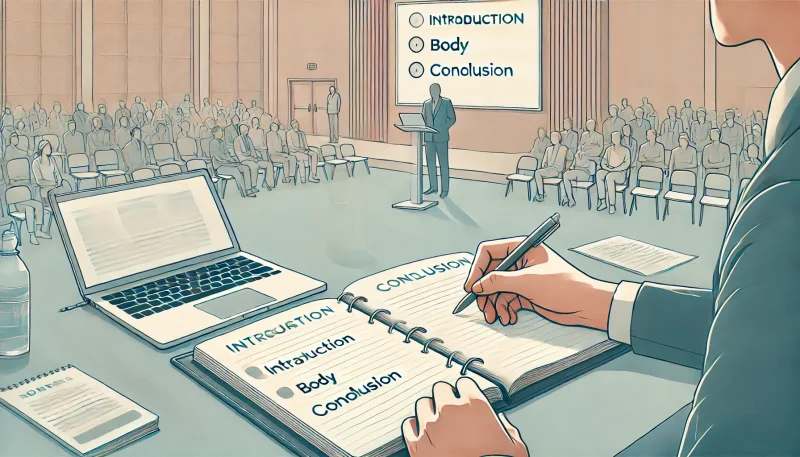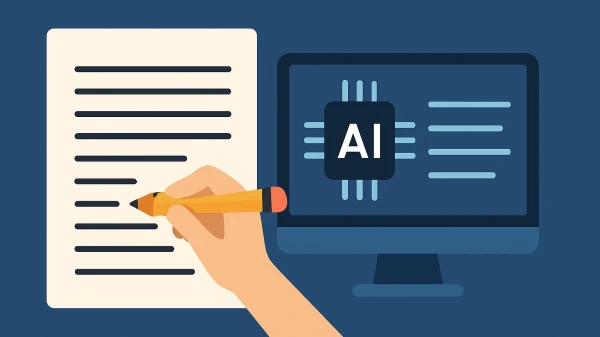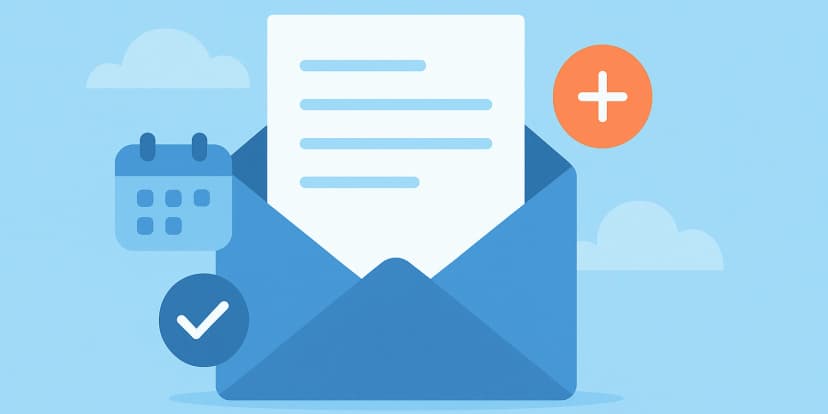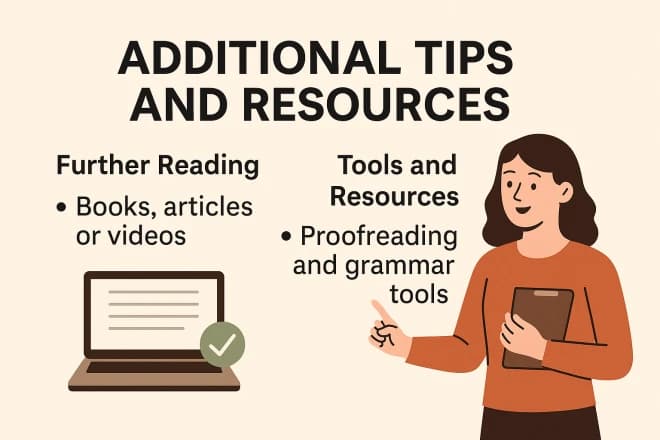Unlock Insights: Find the Answers You Seek on Our Blog
How to Write an Informative Speech Preparation Outline Example: A Step-by-Step Guide
By Evelyn Sterling
Welcome to the Informative Speech Outline Guide! This resource is designed to help you create clear, well-organized speech outlines with ease. A solid preparation outline is essential for delivering effective speeches—it keeps your ideas structured, ensures your message is impactful, and helps you feel more confident when presenting.
Here, you’ll find step-by-step instructions, practical tips, and a complete example to guide you through the process. Whether you’re a student preparing for a class assignment, a beginner learning public speaking, or someone looking to improve presentation skills, this guide will help you craft an outline that sets you up for success.
What You’ll Learn in This Guide
Here’s what we’ll cover:
- The Basics of an Outline: Learn the structure of an informative speech preparation outline.
- Step-by-Step Instructions: Follow a simple process to write your own outline.
- Practical Tips: Get advice on how to make your outline clear, concise, and engaging.
- A Full Example: See a complete outline example you can use as a template.
By the end of this guide, you’ll not only understand how to create a preparation outline but also feel more confident about delivering your speech. Let’s get started!
What Is an Informative Speech Preparation Outline?
Definition of a Preparation Outline
A preparation outline is like a blueprint for your speech. It’s a detailed plan that helps you organize your ideas, structure your points, and ensure you deliver a clear and effective message. Think of it as a guide that keeps you focused and helps you avoid getting lost while speaking.
Instead of trying to remember everything on the spot, a preparation outline allows you to map out your speech ahead of time so that you feel confident and prepared when it’s time to present.
Purpose and Benefits
Why bother creating a preparation outline? Here are three big reasons why it’s worth your time:
1. Organizing Ideas Logically
Have you ever listened to a speech that seemed to jump all over the place? It’s confusing, right?
A preparation outline helps you put your ideas in a logical order so your audience can follow along easily.
Whether you’re explaining a process, exploring a concept, or discussing an issue, your outline ensures your speech flows smoothly from one point to the next.
2. Ensuring All Key Points Are Covered
It’s easy to forget something important when you’re nervous or speaking off the cuff.
With an outline, you can make sure every key point, fact, or example you want to include is accounted for.
This keeps your speech well-rounded and ensures you don’t miss anything crucial.
3. Providing a Reference for Practicing and Delivering
Your outline serves as a cheat sheet when you’re practicing. You can use it to rehearse your speech and adjust the timing or flow as needed.
During your presentation, it’s also a handy reference if you lose your train of thought. With your outline in hand, you can quickly get back on track without panicking.
By creating a preparation outline, you’re setting yourself up for success. It’s not just about organizing your speech—it’s about making sure you connect with your audience in a way that’s clear, logical, and impactful. Ready to learn how to structure one? Let’s dive into the next section!
Structure of an Informative Speech Preparation Outline
Creating an outline may sound complicated, but it’s actually quite simple when you break it into sections. A good preparation outline has three main parts: Introduction, Body, and Conclusion. Let’s go over each one step by step.
1. Introduction
The introduction sets the stage for your speech. It’s your chance to grab your audience’s attention and let them know what to expect. Here’s how to structure it:
Hook/Attention Grabber
Start with something that grabs your audience’s attention right away. This could be a surprising fact, a thought-provoking question, a short story, or even a powerful quote. For example:
“Did you know that the average person spends 6 years of their life dreaming?”
Thesis Statement (Central Idea)
Your thesis statement tells your audience what your speech is about in one clear sentence. It’s like a sneak peek of your main message. For example:
“In this speech, I’ll explain the fascinating science behind dreams, how they affect our daily lives, and what they might reveal about our future.”
Preview of Main Points
Briefly outline the key points you’ll cover in your speech. This gives your audience a roadmap to follow. For example:
“We’ll start by exploring what dreams are, then dive into the science of why we dream, and finally discuss how dreams can inspire creativity.”
2. Body
The body is the heart of your speech. This is where you present your main points and back them up with details, examples, and evidence.
Main Point 1
Introduce your first main idea clearly.
Add subpoints to support it, such as facts, statistics, or examples.
For instance:
“Dreams are a series of thoughts, images, and sensations that occur during sleep. Studies show that we spend about two hours each night dreaming.”
Main Point 2
Move to your second main idea.
Use supporting evidence, like a story, research, or visual aids.
For example:
“Scientists believe dreams play a role in processing emotions. A study from Harvard shows that dreaming helps us make sense of our daily experiences.”
Main Point 3
Introduce your final main idea.
Back it up with more evidence.
Example:
“Many creative breakthroughs have been inspired by dreams. For instance, the idea for the sewing machine came from a dream!”
Use transitions between points to keep your speech flowing smoothly. Simple phrases like “Next, let’s explore…” or “Another important aspect is…” work well.
3. Conclusion
The conclusion wraps up your speech and leaves a lasting impression.
Summary of Main Points
Briefly recap what you’ve covered. For example:
“Today, we learned what dreams are, why we dream, and how dreams can spark creativity.”
Memorable Closing Statement or Call to Action
End with something that sticks in your audience’s mind. This could be a thought-provoking question, a quote, or a call to action. For example:
“So tonight, as you drift off to sleep, pay attention to your dreams—they just might change your life.”
By following this structure, your speech will have a clear beginning, middle, and end. Each part serves a purpose and helps your audience stay engaged from start to finish. In the next section, we’ll go over a step-by-step process to help you create your own outline.
Step-by-Step Guide to Writing Your Preparation Outline
Writing a preparation outline doesn’t have to be stressful! By following these easy steps, you’ll have a clear, organized plan for your speech in no time.
1. Choose a Topic and Narrow It Down
Start with a topic that interests you and fits the assignment or occasion. Then, narrow it down to something specific and manageable.
For example:
- Broad Topic: Technology
- Narrowed Topic: How Artificial Intelligence Is Changing Education
Why narrow it down? It helps you focus on delivering a clear message without overwhelming your audience with too much information.
2. Research Your Topic Thoroughly
Good research is the backbone of any great speech. Look for credible sources like books, articles, or expert interviews. Gather facts, statistics, and examples that support your points.
- Tip: Keep your audience in mind. Ask yourself, What would they find most interesting or useful about this topic?
3. Draft a Thesis Statement
Your thesis statement is the main idea of your speech summed up in one sentence. It should be clear, concise, and specific.
Example:
- Topic: AI in Education
- Thesis Statement: “Artificial intelligence is transforming education by personalizing learning, improving accessibility, and enhancing administrative efficiency.”
This sets the stage for your main points.
4. Organize Your Main Points Logically
Decide on the order of your main points. The most common ways to organize your speech are:
- Chronological: Arrange points in time order (e.g., history of AI).
- Topical: Divide your topic into categories (e.g., benefits of AI in education).
- Spatial: Focus on different areas or locations (e.g., AI use in classrooms vs. online learning).
Example for Topical Organization:
- Personalizing Learning.
- Improving Accessibility.
- Enhancing Administrative Efficiency.
5. Write Supporting Evidence and Examples
For each main point, include subpoints with evidence, facts, or examples to back it up. This makes your speech more engaging and credible.
Example for “Personalizing Learning”:
- Subpoint 1: AI-powered tools like adaptive learning platforms adjust lessons based on individual student performance.
- Subpoint 2: Research shows that students using AI tools improve test scores by 30%.
6. Create Smooth Transitions Between Sections
Transitions help your speech flow naturally. Use simple phrases to connect your ideas and guide your audience through the speech.
Examples:
- Between Introduction and Body: “Now that we’ve explored why AI is important, let’s dive into how it’s transforming education.”
- Between Main Points: “Another way AI is improving education is by making it more accessible.”
7. Format the Outline Using Standard Symbols
To keep your outline organized, use a clear format with symbols and indentation. Here’s a common format:
I. Main Point 1
A. Subpoint 1
1. Supporting Evidence/Example
2. Supporting Evidence/Example
B. Subpoint 2
II. Main Point 2
A. Subpoint 1
B. Subpoint 2
III. Main Point 3
A. Subpoint 1
B. Subpoint 2
This structure makes it easy to follow your outline while practicing and delivering your speech.
By following these steps, you’ll create a preparation outline that keeps you organized, confident, and ready to impress your audience. In the next section, we’ll share practical tips to make your outline even better.
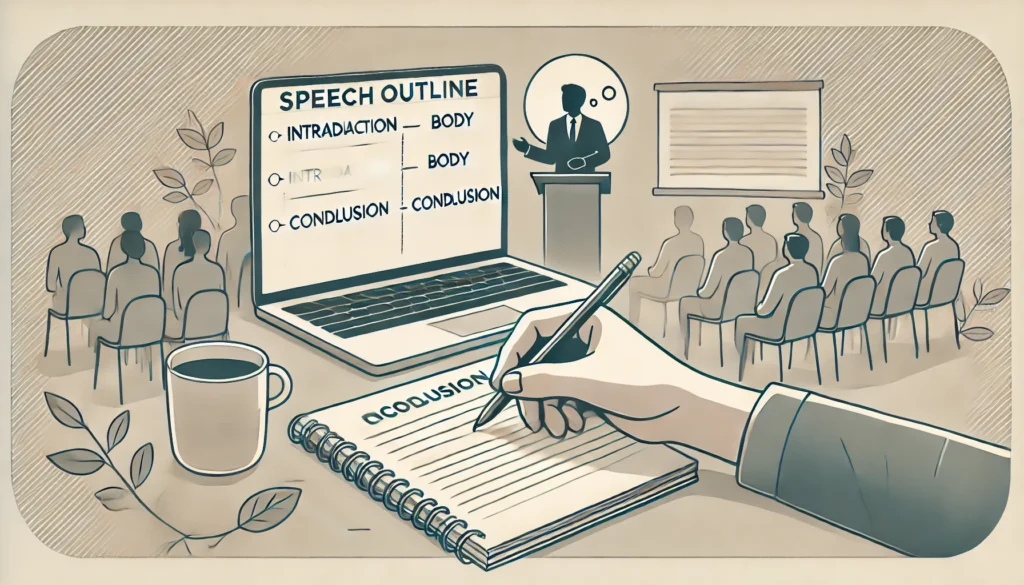
Tips for Crafting an Effective Informative Speech Preparation Outline
Now that you know how to create a preparation outline, let’s talk about how to make it truly effective. A well-crafted outline isn’t just about organization—it’s about making your speech easier to deliver and more engaging for your audience. Here are some practical tips to help you get it right:
1. Keep It Concise but Detailed Enough to Guide You
Your outline should include all the key points and supporting details you need, but it doesn’t have to be overly wordy. Think of it as a guide for your speech, not a script.
Instead of writing full paragraphs, use bullet points or brief phrases.
Focus on the main ideas and essential evidence, so you don’t overwhelm yourself with too much information during the presentation.
Example:
Too Wordy:
“Artificial intelligence is an exciting field that has been growing rapidly in recent years, especially in education, where it has the potential to make learning more accessible for students with disabilities.”
Better:
“AI improves accessibility for students with disabilities (e.g., screen readers, voice recognition tools).”
2. Use Bullet Points or Short Sentences
Bullet points make your outline easy to read at a glance, especially if you’re using it during practice or delivery. Avoid lengthy sentences that could confuse you under pressure.
Example:
Before: “Artificial intelligence is transforming education by creating adaptive learning systems that adjust to individual students’ needs in real time, improving the overall effectiveness of the learning process.”
After:
AI in education:
Adaptive learning tools.
Real-time personalization for students.
3. Tailor Your Outline to Your Audience’s Knowledge Level
Always keep your audience in mind when writing your outline. Ask yourself:
How familiar are they with the topic?
What examples or explanations will resonate with them?
If your audience is new to the topic, include simple definitions and relatable examples. If they’re already knowledgeable, focus on deeper insights or fresh perspectives.
Example:
For beginners: “AI stands for artificial intelligence, which is the ability of machines to mimic human thinking and problem-solving.”
For experts: “AI applications like neural networks and machine learning algorithms are revolutionizing how data is processed in education.”
4. Focus on Delivering Value Through Credible and Relevant Content
Your speech should offer something valuable to your audience—whether that’s new information, practical tips, or inspiration. Use credible sources to back up your points and choose examples that are relevant to your topic.
Example:
Instead of vague statements like “AI is helpful in schools,” say:
“According to a 2023 study by Harvard, AI tools in classrooms improved student test scores by 25%.”
Pro Tip: Always double-check your sources to ensure they’re accurate and up-to-date.
5. Practice Using the Outline for Timing and Flow
An outline isn’t just for planning—it’s a tool to help you rehearse. Practice delivering your speech while referring to the outline. This helps you:
Time Your Speech: Make sure it fits within the allotted time.
Check Flow: Ensure your transitions between points are smooth and natural.
Tip: While practicing, note any areas where the flow feels awkward or where you tend to stumble. Adjust your outline as needed to make it easier to follow.
By keeping these tips in mind, you’ll craft an outline that’s not only clear and organized but also helps you deliver a speech that connects with your audience.
Example of an Informative Speech Preparation Outline
To help you see how everything comes together, here’s a detailed example of a preparation outline for the topic: “The Benefits of Renewable Energy.”
I. Introduction
Hook/Attention Grabber:
“Did you know that the sun provides enough energy to power the entire Earth for a year in just one hour? Yet, we still heavily rely on non-renewable resources like coal and oil.”
Thesis Statement (Central Idea):
“Renewable energy sources like solar, wind, and hydropower are essential for a sustainable future because they reduce pollution, combat climate change, and create economic opportunities.”
Preview of Main Points:
First, we’ll explore how renewable energy reduces pollution.
Then, we’ll discuss its role in fighting climate change.
Finally, we’ll look at the economic benefits of adopting renewable energy.
II. Body
A. Main Point 1: Renewable energy reduces pollution.
Subpoint 1: Fossil fuels release harmful pollutants into the air and water.
Example: Coal plants are one of the largest sources of air pollution, causing respiratory problems.
Subpoint 2: Renewable energy sources like wind and solar produce little to no pollution.
Supporting Evidence: A 2022 report by the EPA shows that solar energy reduces greenhouse gas emissions by 90% compared to coal.
B. Main Point 2: Renewable energy helps combat climate change.
Subpoint 1: Burning fossil fuels is the leading cause of global warming.
Example: The Intergovernmental Panel on Climate Change (IPCC) states that carbon emissions have risen by 40% since 1990.
Subpoint 2: Renewable energy significantly lowers carbon emissions.
Supporting Evidence: Countries like Norway, which rely heavily on hydropower, have some of the lowest carbon footprints in the world.
C. Main Point 3: Renewable energy creates economic opportunities.
Subpoint 1: The renewable energy industry generates millions of jobs.
Example: According to the International Renewable Energy Agency (IRENA), renewable energy jobs increased to 12.7 million globally in 2022.
Subpoint 2: It reduces energy costs in the long run.
Supporting Evidence: Homeowners who install solar panels save an average of $20,000 over 20 years.
III. Conclusion
Summary of Main Points:
“Today, we explored how renewable energy reduces pollution, fights climate change, and creates economic benefits.”
Memorable Closing Statement/Call to Action:
“As we move forward, embracing renewable energy isn’t just an option—it’s a necessity. By making small changes, like supporting renewable initiatives or using energy-efficient appliances, we can all contribute to a cleaner, greener future.”
This outline is simple, clear, and easy to follow. It ensures all key points are covered, supported by credible evidence, and transitions smoothly between sections. You can use this as a template for your own informative speech!
Common Mistakes to Avoid
Even with a solid understanding of how to write a preparation outline, there are a few common pitfalls you’ll want to avoid. These mistakes can make your speech harder to follow or less impactful. Here’s what to watch out for:
1. Overloading the Outline with Too Much Detail
It’s tempting to include everything you’ve researched in your outline, but too much detail can overwhelm you during your speech. Remember, your outline is a guide, not a script.
Why It’s a Problem: If your outline is packed with long sentences or excessive information, you might lose track of your main points or confuse your audience.
How to Avoid It: Stick to bullet points or brief phrases. Focus on the essentials—your main points, subpoints, and key supporting evidence.
2. Neglecting Transitions Between Sections
Smooth transitions are like the glue that holds your speech together. Without them, your speech can feel choppy and disconnected.
Your audience might struggle to follow along if your ideas don’t flow logically from one to the next.
Add simple transition phrases in your outline, like:
- “Now that we’ve discussed the benefits of renewable energy, let’s explore its role in fighting climate change.”
- “Another key advantage of renewable energy is its impact on the economy.”
3. Not Aligning the Outline with the Thesis Statement
Your thesis statement is the backbone of your speech, and every point in your outline should support it. If your points stray too far off-topic, your speech can lose focus.
- A speech that lacks focus can confuse your audience and weaken your overall message.
- Regularly check your outline against your thesis statement. Ask yourself, Does this point directly support my main idea? If it doesn’t, consider cutting it or reworking it.
4. Forgetting to Include a Memorable Conclusion
The conclusion is your chance to leave a lasting impression. If you skip this step or rush through it, your audience might forget your key message.
A weak conclusion can make your speech feel incomplete or unremarkable.
How to Avoid It:
- Summarize your main points clearly.
- End with a memorable closing statement or call to action. For example:
- “Let’s all take one small step toward a sustainable future by supporting renewable energy in our daily lives.”
By avoiding these common mistakes, you’ll ensure that your preparation outline sets you up for a confident, clear, and impactful speech. Remember, a strong outline doesn’t just help you—it also makes your speech more engaging and easier for your audience to follow.
Now that you’re armed with all the tools and tips, it’s time to create your own outline and deliver a speech that stands out!
Conclusion
A well-prepared outline is the foundation of a successful speech—it keeps your ideas organized, ensures clarity, and helps you connect with your audience. By using the example and tips provided, you can confidently create your own outline tailored to your topic.
Now it’s your turn! Start drafting your outline, practice delivering your speech, and refine it as you go. Share your experiences or any challenges you face—learning from feedback is a great way to improve. Remember, every great speaker starts with a great plan. Go ahead and make yours today!
Additional Resources
To help you take your preparation outline and public speaking skills to the next level, here are some helpful resources you can use:
1. Link to a Printable Outline Template
Download a ready-made outline template that you can customize for your own speech. Here’s an example of what you can look for:
- Basic Speech Outline Template (PDF)
- Editable Speech Outline (Google Doc)
- These templates are formatted with sections for the introduction, body, and conclusion, making it easy to get started.
2. Suggested Tools for Writing
Writing and organizing your outline is much easier with the right tools. Here are some great options:
- Google Docs: Perfect for creating and editing outlines on the go. You can also collaborate with peers for feedback.
- Notion: A versatile tool for organizing your speech ideas, research, and outline in one place.
- Microsoft Word: A classic option with plenty of formatting tools for your outline.
- Canva: If you want to create a visually appealing outline, Canva’s templates make it easy.
- https://aifreebox.com/list/ai-speech-outline-generator
3. Recommended Books or Videos on Public Speaking
Books:
- “Talk Like TED” by Carmine Gallo: Learn strategies for delivering powerful and engaging presentations.
- “The Quick and Easy Way to Effective Speaking” by Dale Carnegie: A timeless guide for mastering public speaking.
- “Confessions of a Public Speaker” by Scott Berkun: Offers practical advice with humor and real-world examples.
Videos:
- TED Talks: Watch how expert speakers structure and deliver their speeches.
- “How to Speak So That People Want to Listen” by Julian Treasure: A must-watch for learning vocal techniques and presence.
- YouTube Channels: Check out Toastmasters International or Charisma on Command for public speaking tips.
These resources will not only help you craft a strong preparation outline but also give you tools and inspiration to become a more confident speaker. Start exploring and building your skills—you’ve got this!
AI Tools Categories
Browse all AI tools by category
All AI Tools
229Amazon
5AI Writing Generator
85Article & Content Writing
35Branding & Identity
54Content Generation
170Creative Ideas
32Educational Resources
34E-commerce
14Etsy
6Events & Celebrations
13Facebook
6Gaming & Fun
5Instagram
3Lifestyle & Personal
8LinkedIn
6Marketing & SEO
40Poem & Lyrics Writing
19Professional Documents
31Social Media
44Story & Book Writing
49Text Effects
14TikTok
7Twitter
3Writing Enhancement
36YouTube
11
Highly rated and most popular AI tools curated by our experts
Recently added AI tools that are gaining traction
- AI Post Generator

- AI Bullet Point Generator

- AI Discussion Post Generator

- AI 2 Weeks Notice Letter Generator

- AI Content Creation Ideas Generator

- AI Radio Ad Script Generator

- AI Podcast Script Generator

- AI Resume Objective Generator

- AI Resume Headline Generator

- AI Password Generator

- AI Snapchat Caption Generator

- AI Snapchat Username Generator

- AI Pinterest Board Name Generator

- AI LinkedIn Experience Description Generator

- AI Twitter Hashtag Generator

- AI YouTube Short Idea Generator

we prioritize displaying the latest content closely related to the current blog post.
